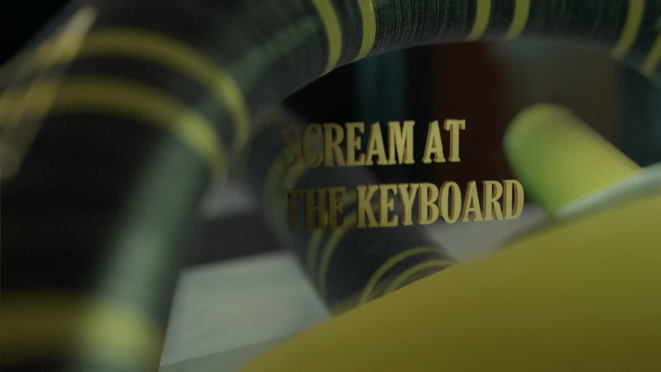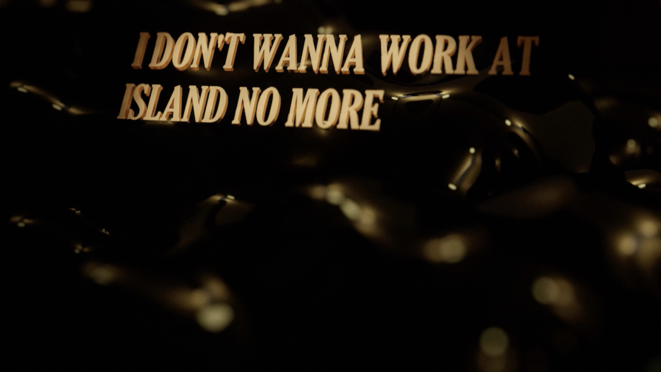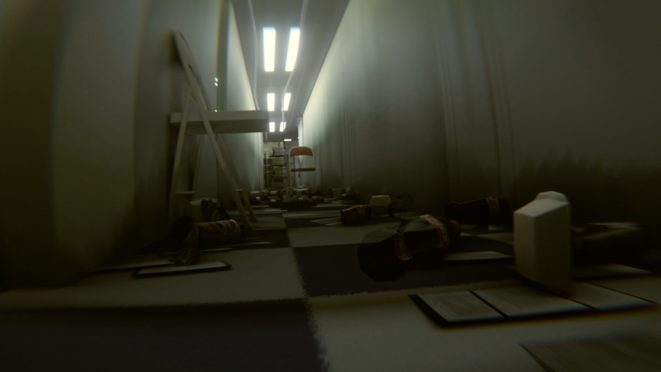Finance of Horror
There is something quite closely connected between this concept of absolute capitalism – anchored in capitalist realism, expressed through auto-exploitation – and the all-encompassing condition of the horror genre. From the outset of this research project, it was clear to me that the environment being thematically worked on, in the research and artistic work, would be the realm of finance. Partly due to how it has shapes this absolutism, through which everything political must undeniably be imagined, but also how linguistic, allegorical and most importantly temporal qualities are shared between the realm of finance and the horror genre. Linguistically, in the way stockbroker lingo habitually refers to the act of killing, hunting, dying, slicing and maiming; or how the structure of language used to define the realm of finance is entangled and evades direct reading, ensuring the veil of a mystical dimension. Allegorically, when one considers finance as immaterial, perhaps even imaginary, movements and disturbances, having actual effect out in the real world; or as an invisible force controlling the destiny of many; or if one considers the liquid darkness that it operates in. And finally temporally, in the way the economy oscillates between stable time passages and certain shocking and hectic erratic temporal shifts in intensity; or how time perspectives overlap in disturbing ways when the market reacts presently to things that have not yet surpassed or is suddenly disrupted by ghosts of the past; or how time continuum disappears in unfathomably fast registered nows.
New Spaces to Counter-be
It is however important to note how this research project is not about modern finance per se, but really about experimentations within a time-based art practice, in relation to the genre of horror fiction, in the thematic and politically engaging setting of financialisation and neoliberal economy. I have been searching for ways in which these explorations of temporalities can create potential third spaces, for new understandings of a political landscape shaped by absolute capitalism and our relation to it. And whether engaging with this in a time-based artistic practice, revolving around the temporal and bodily rearrangements of the video installation, can tell us something new about the nature of this relation. I have tried to use the temporal qualities, the body-presence, the gaps and spaces of darkness of the video installation, to enable new (differently illuminated) passages into the opaqueness experienced in our engagement with modern finance. And through these passages perhaps come closer to an understanding of how and why this engagement so heavily mirrors conditions within the horror genre. I intertwine these ideas – of a connection between the temporal qualities of horror fiction, the temporality experienced in the video installation and the temporal experience of engaging in a society driven by dark economic structure – with the practical processes involved in the artistic work revolving around the video format and its temporal materiality. By this I am trying to arrive at ways of understanding how this combination may be used to imagine new spaces to counter-act, counter-think, counter-be.
Horror Figures
Some of the financial formations that have emerged in this exploration, I have adopted as figures for the artistic production of Oceanic Horror. As figure I understand them as parts of a whole. They do not form characteristics or certain narratives, they rather inhabit the works and take part in the shaping of an environment, a certain atmosphere or a condition. These figures include financial speculation, algorithmic transactions, environmental exhaustion, cognitive work and debt economy. As a starting point financial speculation is conceived as an alienating space of algorithmic transactions. A decisional ecology leaving the human beings, invested in this activity, strangely culpable and dissociated at the same time. The imaginary gush of digits and symbols create an otherworldly activity chillingly operative in the actuality of everyday live – like an algorithmic incorporeal poltergeist rearranging the actual furniture of the living room. The speculative nature of the handling of real people’s livelihood also defines a space where ethics are exchanged for markets and a crisis of morality stirs inside each individual trader. As the torrent of excess – ultimately irrevocable in the realm of deregulation – spins centrifugally ahead, a notion of suicidal tendency and self-harm becomes apparent. The centrifugal drive turns centripetally in on itself, as the finitude of natural resources promises the catastrophic end of this venture. Finally debt economy unfolds the harrowing sense of guilt and the trading off of actual living-time for the citizen. The indebted man roams the urban setting restlessly as a living dead, owing all of what really constitute lived life, namely time, to an undefined and opaque apparatus. With these figures as a constant backdrop, the banker herself (the character of Oceanic Horror) is hollowed out, not only out of constantly fearing ‘the drop’ or the crash always dormant in financial speculation, but also from working (and living) within a determining force of complete obscurity, from the auto-exploitation as master and slave in one and from the feeling of being temporally outstripped by trading bots. The banker nervously inhabits this horror landscape forever trapped in the black box reflecting chamber of non-transparency. The opaque zone of transactions and the markets built upon exhaustion, chaos, violence and unrest generates an eerily consequential culpability in the banker as well as the everyday consumer. Adding to the flood of horrors the post-bourgeoisie ethics and aesthetics of virtuality and the deterritorialization of markets and production apparatuses, unfolds a strange unshakable experience of displacement and extraterrestriality. The (de)territory of absolute capitalism is truly a horror setting. It is a force existing in the unreal terrain of the imaginary yet brutally operational in the real. Perhaps, without yet knowing this, the actors of the horror fiction that constitutes absolute capitalism – bankers and consumers alike – really long for new ways of exploring the horror narrative they’re stuck in.



